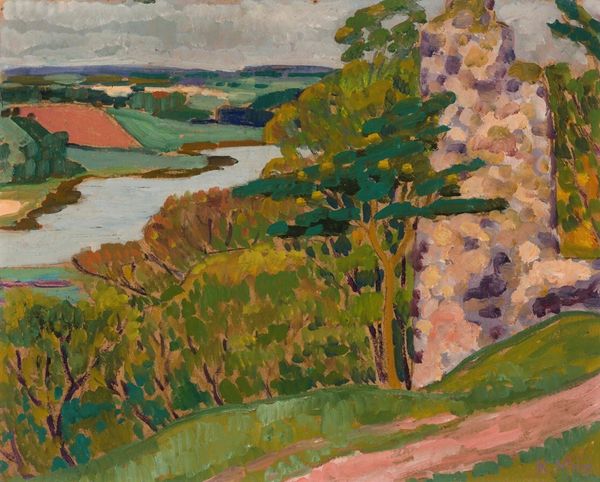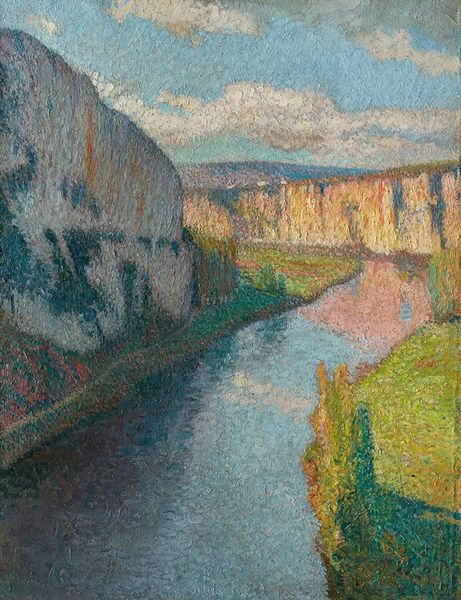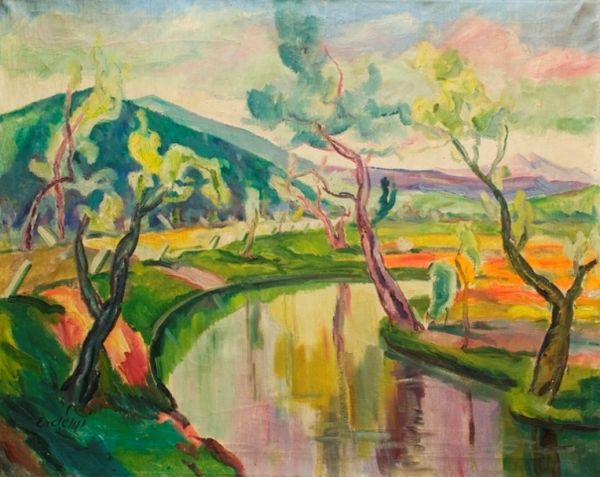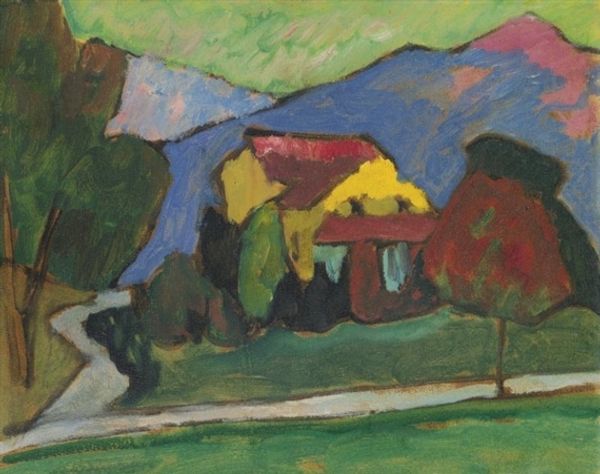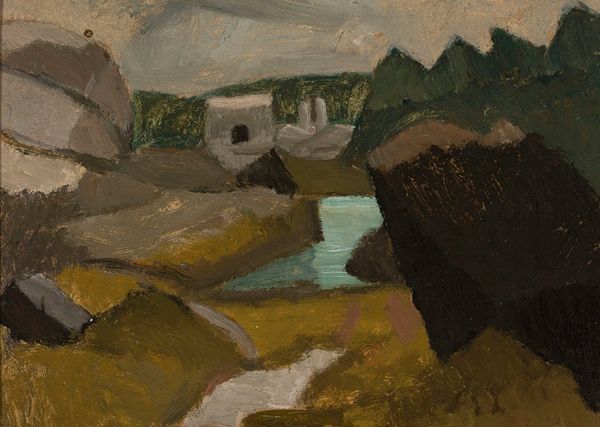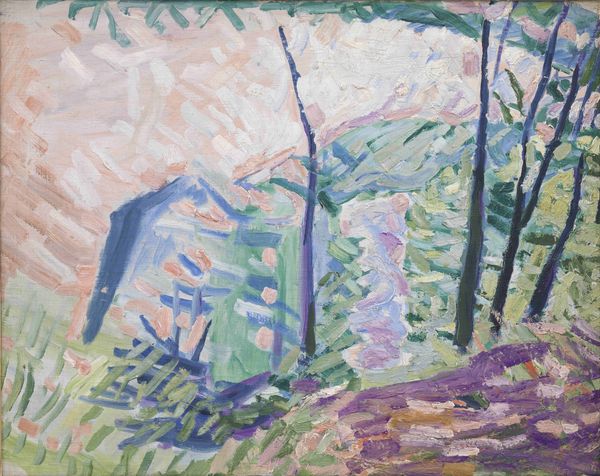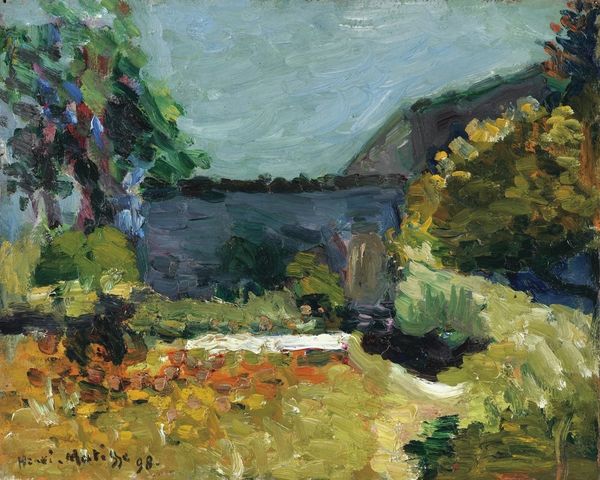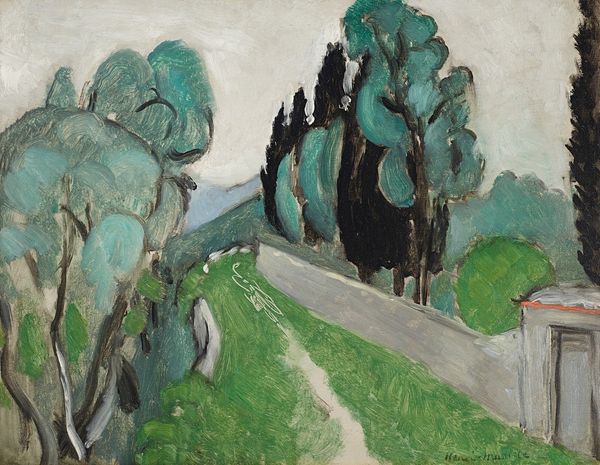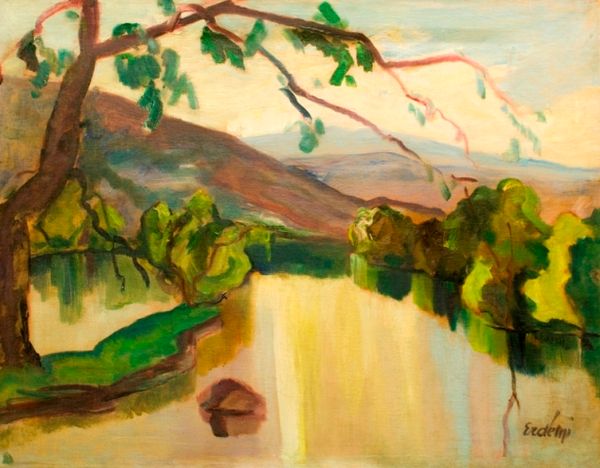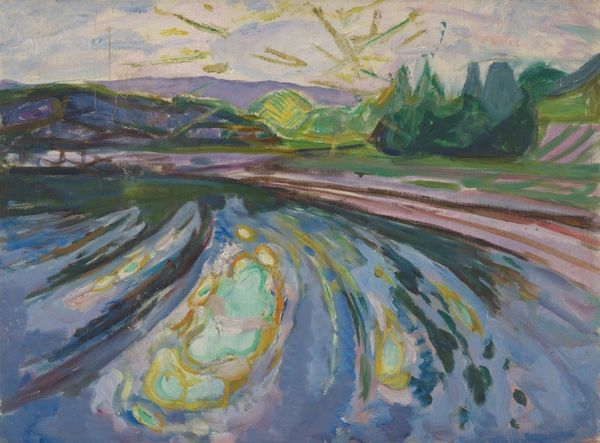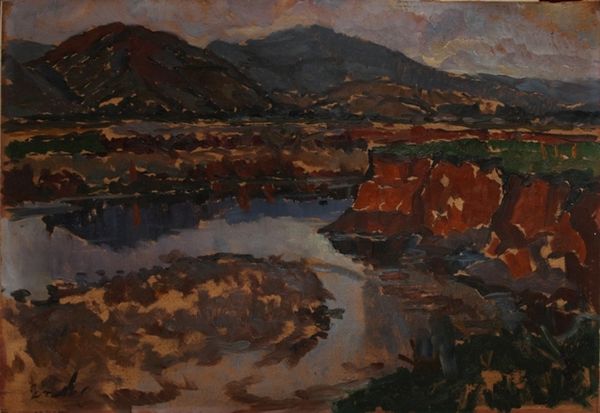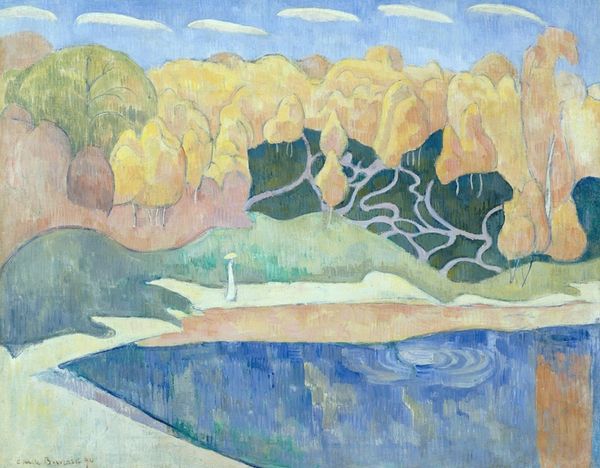
Dimensions: support: 565 x 708 mm
Copyright: CC-BY-NC-ND 4.0 DEED, Photo: Tate
Editor: So, here we have Roger Fry's "River with Poplars", held at the Tate. The paint seems thickly applied, almost sculptural. How do you see the materials contributing to the overall effect? Curator: Consider Fry's interest in Post-Impressionism and the means by which he translated that interest into a distinctly English aesthetic. How did the availability and cost of materials like paint and canvas shape his artistic choices and the reception of his work in a burgeoning art market? Editor: That’s interesting, I hadn't thought about the economics of art materials at the time. Curator: And what of the social context that shaped those choices? The way Fry used readily available materials for paintings which became quite collectible, how does this reflect on the larger discourse around artistic value? Editor: Right, the tension between accessibility and exclusivity. Thanks for the insight! Curator: Indeed. Thinking about the materials helps to deconstruct the perceived hierarchy of art.
Comments
Join the conversation
Join millions of artists and users on Artera today and experience the ultimate creative platform.
tate 6 months ago
⋮
This view was painted from the bridge at Angles sur l’Anglin near Poitiers in France. Fry had discovered the painting of Paul Cézanne in 1906, the year of Cézanne’s death, and had built an aesthetic theory largely based on the way Cézanne constructed his pictures. The style of this painting is like Cézanne in the suppression of detail, and in the organisation of the colouring into clear masses. The shapes are deliberately made to look solid, even the clouds and the banks of reeds in the river. Gallery label, February 2010
